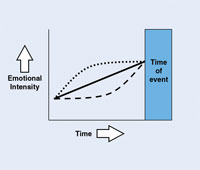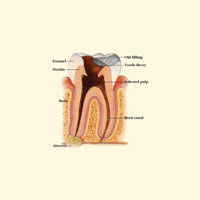Last year I made an 8 PM reservation at a high-end restaurant, far in advance of our dinner date. When the night arrived, I realized we were being optimistic about the time, so I called the restaurant to say that we might be a couple of minutes late. The reply surprised me. I was told, “Don’t worry, the table is yours, we only have one seating per evening.” Of course I realized that I would pay for this exclusivity, yet I went to dinner with a wonderful, relaxed feeling. I felt respected, well taken care of.
Around the same time a patient remarked that I had “the Union Square Café of dental practices.” It was kind of an odd comment—I guarantee you won’t find an osso buco or a Mississippi mud pie in my office. As a “foodie,” though, I knew that Union Square Café was the top-rated restaurant in New York City for many years running, known for its excellent food as well as the extraordinary competency and friendliness of the staff, so I took it as a nice compliment…very nice. Soon the two experiences got me thinking—what is it about a great restaurant dinner that makes people so happy and invites comparisons to other, unrelated experiences? How can we, as practitioners, give our patients that same feeling?
TWO INVIOLATE RULES
Two absolutely inviolate rules about New Directions are as follows: (1) most of them aren’t really that new, and (2) they take time.
In restaurants we are addressed appropriately, and so it should be in our offices. “How would you like to be addressed?” is a perfectly pitched question to a new patient, and it reflects excellent manners. As cleanliness is an absolute prerequisite for a meal, so it is in our offices. Our treatment rooms, our front desk, and especially our bathrooms must reflect a well-mannered sensibility that says, “We know that all of our treatment must be done in the cleanest possible environment.” To this end we regularly take turns sitting in the patient’s chair and carefully scanning everything that a patient would see. This patient view then guides us to improvements we need to make.
As in a fine restaurant, the entire dental experience is choreographed. Every dental staff person has a role: the greeting at the door by the receptionist, the seating by the dental assistant, the actual procedure by the doctor and assistant, and then the dismissal by the assistant. It ends at the front desk, where payment is made and the next appointment is scheduled, followed by a friendly farewell. Sometimes an encore involves an after-hours call to the patient to assess postoperative comfort and express our caring. Our competency, the ability of everyone to do the same performance to the same beat, sends a strong message of coordination. We are all on the same page. We discuss and reinforce this togetherness at our bi-weekly staff meetings. Later in the article I will describe how we get our patients to join us in the dance and therefore reach a very high level of comfort, satisfaction, and may-be most of all, a sense of family and belonging.
The key to all of this is time. Lateness screws up everything, and I mean absolutely everything. In my experience time mismanagement is the biggest single defect in the modern dental practice. It is not that we don’t know how to take an excellent impression, or that our assistants don’t know how to prep a treatment room properly, or that our hygienists don’t know how to remove subgingival calculus properly, or that our front desk people don’t know how to collect for treatment or schedule appointments properly. They know all of those things, but frequently they don’t have the time to do them properly.
Obviously, time management has a huge impact on the clinical side of the practice. You cannot anesthetize tooth No. 30, prepare it for a crown (PFM, Lava [3M ESPE], Procera [Nobel Biocare], whatever), take an impression (using cord or a laser), and temporize the tooth (acrylic or composite) in 15 minutes. Impossible! We are treating a person that has both teeth (and gums) and, very importantly, feelings. Yet frequently that is the amount of time the dental team has to do this work. Either the treatment is done properly and the next patient is kept waiting, or it is done poorly. It is that simple. By doing the treatment poorly (rushed), you may irritate the periodontal tissues, force your lab to guess where the margins are, and cause your patient to experience an additional dental procedure that clearly conveys you were either rushed or incompetent. Not good options.
So many advances in clinical dentistry involve procedures that are time-savers, but this can cause an over-reliance on speed. The simple but essential discipline of allowing the proper amount of time for the procedure—the proper amount of time for anything—is often ignored. In the olden days our parents called it manners, or respect for others, and I agree. If you allowed 10 minutes to get to a location 50 miles away and were late, where would the responsibility lie? And who would be kept waiting? Over the years it continues to vex me why so many of my colleagues, the same ones who want to cure a composite in 2 seconds in order to save time, are so often late.
A recent New Yorker cartoon captured this point perfectly. It depicted a medical receptionist sitting behind her desk (and glass window, a sure intimacy builder!) and telling a patient, “I know your appointment with the Doctor was at 10:00, but his appointment with you was for 11:00!” The receptionist, and I’m sure the doctor as well, missed the point that time is a social commodity, and an appointment is a social contract. We harm the relationship when we break that contract.
No less an astute observer of human nature than Carl Sandberg said, “Time is the coin of your life. It is the only coin you have, and you only can determine how it will be spent. Be careful lest you let other people spend it for you.” Our patients have not authorized us to overstep the time boundaries to which we have agreed. We transgress at our own peril.
Once our patients “get on to us,” once they realize they will be kept waiting 10, 15, or 20 minutes (perhaps longer), they will then adjust their arrival times to compensate for their own busy schedules. Some show up late, some not at all, and your appointment book becomes balkanized. Anarchy rules. Try to do excellent dental care, or excellent anything for that matter, in that lawless setting. Collect money? Good luck!
And it gets worse. The doctor’s lack of time discipline can spawn a chronically late staff. Those staff members who are dutifully on time will spend most of the day seething at the doctor. As well-mannered as they may be, they will ultimately lose faith. Just as patients will get wise to this problem and make adjustments, the staff will as well. There is so much to do in our lives, and nobody wants to waste time. If the day starts a few minutes late, we can try to make up the time, but we almost never do.
Frequently the gap widens by lunchtime, and if we must still treat 2 patients (who may have traveled more than an hour to get to the office after waiting a month for an appointment), then the lunch break disappears. Doctor forgets that nourishment is not a luxury, it is a necessity—and besides that, a serious violation of labor laws has now occurred! But what can he or she do? The afternoon can only get worse. At closing, a tired, cranky, and undernourished staff and doctor slog out of the office, late of course. Instead of feeling gratified or even satisfied about the well-done care they provided, everyone can’t wait to get out of that nuthouse.
I’m not making the case that emergencies don’t happen…they do. But they can be planned for, and one doesn’t have to experience the helplessness of a schedule run amok. In our office we trick the god of chaos in the following ways…
New Directions on the Clinical Side
We allow an extra 20 minutes for every new patient (emergency or regular), since not only is there extra paperwork, but more importantly, this a key rapport-building visit and should not be rushed.
Allow one 15-minute “gap” or “time valve” for every 2 hours of clinical dentistry. After all, what’s your hurry? The stress is bad for your heart!
Treat the hygiene check respectfully, ie, give patients a proper amount of (unrushed) time. Most, if not all, of your clinical dentistry comes from these recall visits. Plan them at the morning meeting by reviewing each chart and seeing what treatment is pending.
Never leave a patient alone in the treatment room. Your dental assistant needs to represent the office (and you) when you are required to step out.
You are never to appear rushed, even when you are. (And since you have all of this extra space, you never will be rushed!)
New Directions for Office Policies and Procedures
Determine your Missed Appointment Policy and stick to it. In our office we require 2 business days to change appointments without a charge. The charge usually reflects the value of the missed appointment. We collect these charges unless sickness or something absolutely unforeseen has occurred. An unplanned business meeting or business emergency does not qualify, since patients are working (presumably making money), and we are left with an empty chair. Business people appreciate the value of time and are not at all uncomfortable paying for it when they experience value and respect in all of the facets of your practice.
This policy needs to be articulated when the appointment is made. Everyone on staff needs to be comfortable with it. If patients are not comfortable with this, then they are unsuitable patients for our practice. The last thing we need is a growing population of chaos-makers.
If patients are more than 10 minutes late, then they are rescheduled. (Earthquakes and other natural disasters like train delays are exempt.) Missed Appointment fees are at the discretion of the front desk person. Our staff realizes that chronic latecomers are a drain on the entire office (and everyone’s livelihood), and those folks should be encouraged to go elsewhere.
We practice how we talk about this. Friendly, firm, and dignified are the words that describe our conversations about this hard issue. Again, Staff Meetings as well as the Morning Meetings are where we role-play these difficult conversations. We have found that our ability to see and dismiss patients on time is a huge plus for our practice. We are known as an on-time office, which means professional, competent, and well-mannered…all good things.
CONCLUSION
It all goes back to that fine-dining experience. Okay, so no patient is going to come away from a visit complimenting our bruschetta rosa or banana tart (God forbid)—but we like to think that the feeling of being cared for and respected, that feeling of comfort in the hands of assured professionals, is, in the end, the same thing. So, reservation please?
Dr. Goldstein is a 1968 graduate of the University of Pennsylvania School of Dental Medicine. He is a past president of the Academy of Laser Dentistry as well as a certified professional coach. He received his certification credential from New Ven-tures West after taking its 1-year professional coaching course. Dr. Goldstein is a fellow in the American College of Dentists and serves on the Dental Advisory Board of Dentistry Today. He maintains both a general practice dental practice as well a coaching practice in New York City and can be reached at llaama1@mindspring.com or by visiting coachingpractice.com or alangoldsteindentist.com.










